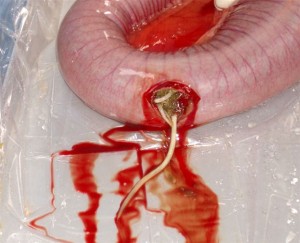Drug Resistance
Anthelmintic Drug Resistance
 Anthelmintic resistance is where a greater proportion of individual parasites within a population is able to tolerate a specified dose of an anthelmintic drug (wormer, drench) than in a normal population of the same species. Thus, when resistance occurs, a drug loses its effectiveness and the recommended dose does not kill 100% of the worms that it originally killed before resistance developed. The larger the proportion of the worm population that is resistant, the larger the proportion of worms that is not killed by the wormer or drench.
Anthelmintic resistance is where a greater proportion of individual parasites within a population is able to tolerate a specified dose of an anthelmintic drug (wormer, drench) than in a normal population of the same species. Thus, when resistance occurs, a drug loses its effectiveness and the recommended dose does not kill 100% of the worms that it originally killed before resistance developed. The larger the proportion of the worm population that is resistant, the larger the proportion of worms that is not killed by the wormer or drench.
Resistance involves a genetic change, so when resistant worms mate, they pass their resistance genes on to their offspring. Anthelmintic drugs do not create resistance genes. Resistance genes arise in worms due to gene mutations that happen by chance. Anthelmintics kill worms that are not resistant. Worms that have resistance genes are not killed but remain alive and reproduce, passing on their resistance genes which creates an increasing number of resistant worms in the worm population.
Resistant worm populations are believed not to revert to drug sensitivity. Even after 10 years of no exposure of resistant parasites to a drug, the parasites have still remained resistant.
